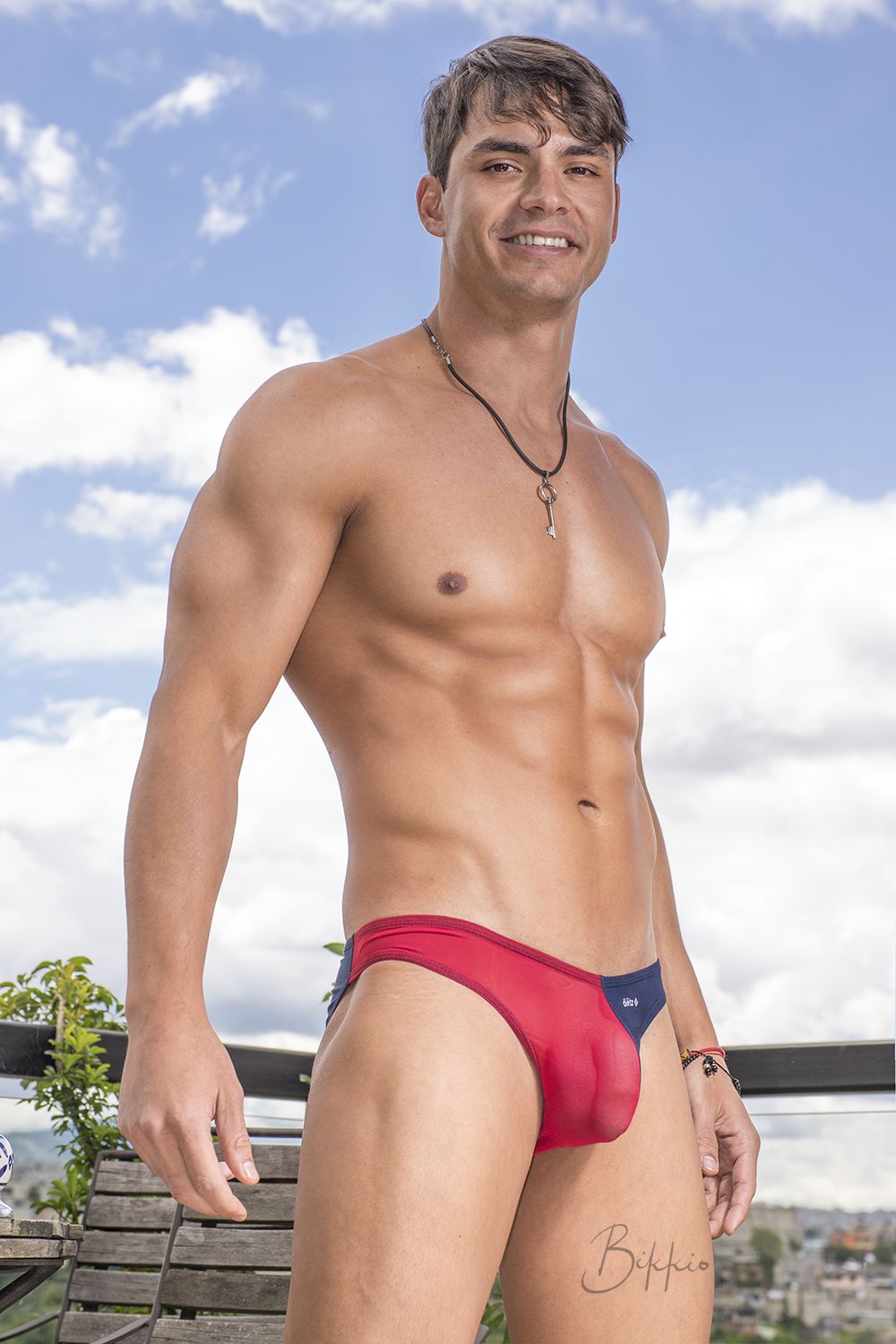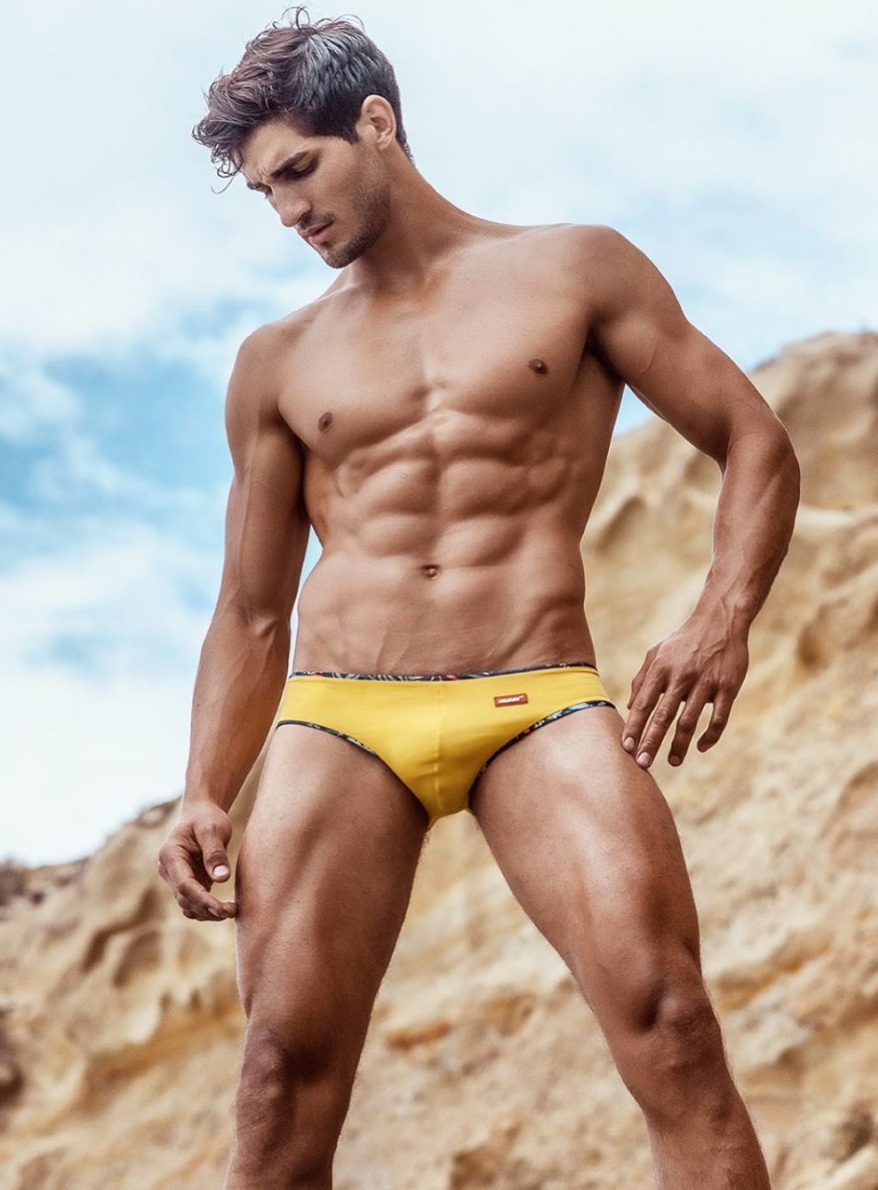Content Menu
● The Design of Swimwear
>> Streamlined Silhouettes
>> Fabric Choices
>> Innovative Designs
● Posing Techniques
>> The Art of Posing
>> Confidence and Body Language
● Cultural Perceptions
>> Societal Standards of Masculinity
>> The Impact of Media
● Tucking Techniques
>> Understanding Tucking
>> The Role of Underwear
● The Psychology of Body Image
>> Body Positivity and Acceptance
>> The Impact of Social Media
● The Future of Male Swimwear Modeling
>> Evolving Standards
>> The Role of Education
● Conclusion
>> Related Questions and Answers
>> 1. What types of swimwear are best for minimizing bulges?
>> 2. Do all male models use tucking techniques?
>> 3. How does posing affect the appearance of male models in swimwear?
>> 4. What role does confidence play in modeling?
>> 5. How is the conversation around body image changing in the fashion industry?
The world of fashion and modeling often presents an idealized version of reality, particularly when it comes to swimwear. One question that frequently arises is, "Why do male models have no bulges in swimwear?" This topic delves into various aspects, including swimwear design, modeling techniques, cultural perceptions, and the psychology behind body image in the fashion industry.
Article: How To Make Your Package Look Bigger in Swimwear?
The Design of Swimwear
Streamlined Silhouettes
Swimwear is meticulously designed to create a streamlined silhouette. Many brands focus on producing swimwear that enhances the male form while minimizing any potential bulges. This is achieved through the use of specific materials and cuts that provide support and compression.
For instance, swim trunks and briefs often feature built-in liners or support systems that help to keep everything in place. These designs are not only functional but also serve to create a visually appealing look that aligns with the aesthetic standards of the fashion industry.

Fabric Choices
The choice of fabric plays a crucial role in how swimwear fits and looks on the body. Many swimwear brands utilize materials that have a certain degree of elasticity and compression. These fabrics can help to smooth out the body's contours, reducing the visibility of bulges.
Additionally, the use of darker colors and patterns can also distract the eye from any potential imperfections, further contributing to the overall sleek appearance of male models in swimwear.

Innovative Designs
In recent years, swimwear designers have become increasingly innovative, experimenting with cuts and styles that cater to different body types. For example, some brands have introduced swimwear with adjustable features, allowing wearers to customize the fit according to their body shape. This adaptability not only enhances comfort but also helps in achieving a more flattering look.
Moreover, the rise of eco-friendly swimwear has led to the use of sustainable materials that still provide the necessary support and compression. These advancements in design reflect a growing awareness of body diversity and the need for inclusivity in fashion.
Posing Techniques
The Art of Posing
Male models are trained professionals who understand the importance of posing in creating a flattering image. Posing techniques can significantly influence how the body appears in swimwear.
Models often use specific angles and body positions to enhance their physique while minimizing any unwanted bulges. For example, turning the body slightly to the side or placing one leg in front of the other can create a more defined look, drawing attention away from areas that may be less flattering.

Confidence and Body Language
Confidence plays a significant role in how models present themselves. A confident model is more likely to exude an aura of self-assuredness that can distract from any perceived flaws. This confidence is often cultivated through experience and training, allowing models to feel comfortable in their skin, regardless of the swimwear they are wearing.
In addition to physical posing, body language is crucial. Models are taught to engage with the camera and their audience, using facial expressions and gestures that convey confidence and allure. This connection can enhance the overall impact of the image, making it more appealing to viewers.

Cultural Perceptions
Societal Standards of Masculinity
Cultural perceptions of masculinity heavily influence how male bodies are viewed in swimwear. In many societies, there is a strong emphasis on the ideal male physique, which often includes a toned and muscular appearance. This societal pressure can lead to a preference for swimwear styles that downplay any bulges, aligning with the cultural ideals of masculinity.
The portrayal of male bodies in media and advertising often reinforces these standards, showcasing models who fit a specific mold. This can create unrealistic expectations for the average man, leading to body image issues and a desire to conform to these ideals.
The Impact of Media
The media plays a significant role in shaping perceptions of male bodies. Advertisements, magazines, and social media often showcase male models who fit a specific mold, leading to unrealistic expectations for the average man. This portrayal can create a stigma around male bulges in swimwear, further influencing the design and marketing of swimwear products.
As social media platforms have gained popularity, the influence of influencers and models has expanded. Many male influencers promote body positivity and acceptance, challenging traditional beauty standards. This shift in representation can help to normalize different body types and encourage a more inclusive view of masculinity.

Tucking Techniques
Understanding Tucking
In the modeling industry, some male models may employ tucking techniques to create a flatter appearance in swimwear. This practice involves positioning the genitalia in a way that minimizes bulges, allowing for a smoother look. While this technique is not universally used, it is a common practice among models, especially in swimwear and underwear shoots.
Tucking can be achieved through various methods, including the use of specialized underwear designed for support and compression. These garments can help to create a streamlined appearance, allowing models to feel more confident in their swimwear.
The Role of Underwear
The type of underwear worn under swimwear can also impact the appearance of bulges. Many male models opt for supportive underwear that helps to keep everything in place, further contributing to the sleek look that is often desired in swimwear modeling.
Brands have recognized the importance of this aspect and have developed underwear specifically designed for wear under swimwear. These products often feature moisture-wicking fabrics and ergonomic designs that enhance comfort while providing the necessary support.
The Psychology of Body Image
Body Positivity and Acceptance
The conversation around body image has evolved significantly in recent years, with a growing emphasis on body positivity and acceptance. While the fashion industry has traditionally favored a narrow definition of beauty, there is a shift towards inclusivity and diversity in body types.
This change is slowly influencing how male models are perceived in swimwear. As society becomes more accepting of different body types, the pressure to conform to a specific ideal may lessen, allowing for a broader representation of masculinity in swimwear.
The rise of body positivity movements has encouraged individuals to embrace their bodies, regardless of societal standards. This shift is reflected in the fashion industry, where brands are increasingly featuring models of various shapes and sizes in their campaigns.
The Impact of Social Media
Social media has become a powerful tool for shaping body image perceptions. Platforms like Instagram and TikTok allow models and influencers to showcase their bodies in swimwear, often promoting a more realistic and diverse representation of masculinity. This shift can help to challenge traditional beauty standards and encourage acceptance of all body types.
Influencers who advocate for body positivity often share their personal experiences with body image, helping to normalize conversations around insecurities and self-acceptance. This openness can inspire others to embrace their bodies and feel more confident in swimwear, regardless of societal expectations.
The Future of Male Swimwear Modeling
Evolving Standards
As the fashion industry continues to evolve, the standards for male swimwear modeling are also changing. There is a growing recognition of the need for diversity and inclusivity, leading to a broader representation of different body types in swimwear campaigns.
Brands are beginning to embrace models of various shapes and sizes, challenging the traditional ideals of masculinity. This shift not only reflects changing societal attitudes but also caters to a more diverse consumer base that seeks representation in fashion.
The Role of Education
Education plays a crucial role in shaping the future of male swimwear modeling. As awareness of body image issues and the importance of representation grows, it is essential for aspiring models to understand the impact of their work.
Modeling agencies and brands can contribute by providing training and resources that promote body positivity and inclusivity. By fostering an environment that values diversity, the industry can help to create a more accepting and supportive space for all models.
Conclusion
The question of why male models have no bulges in swimwear is multifaceted, involving design choices, posing techniques, cultural perceptions, and the evolving conversation around body image. As the fashion industry continues to change, there is hope for a more inclusive representation of masculinity in swimwear, allowing for a broader acceptance of different body types.
Related Questions and Answers
1. What types of swimwear are best for minimizing bulges?
- Swimwear with built-in support, compression fabrics, and darker colors can help minimize the appearance of bulges.
2. Do all male models use tucking techniques?
- Not all male models use tucking techniques, but it is a common practice in the industry, especially for swimwear and underwear shoots.
3. How does posing affect the appearance of male models in swimwear?
- Posing can significantly influence how the body appears, with specific angles and positions helping to create a more flattering look.
4. What role does confidence play in modeling?
- Confidence is crucial in modeling, as it can enhance the overall presentation and distract from perceived flaws.
5. How is the conversation around body image changing in the fashion industry?
- There is a growing emphasis on body positivity and inclusivity, leading to a broader representation of different body types in fashion.






































